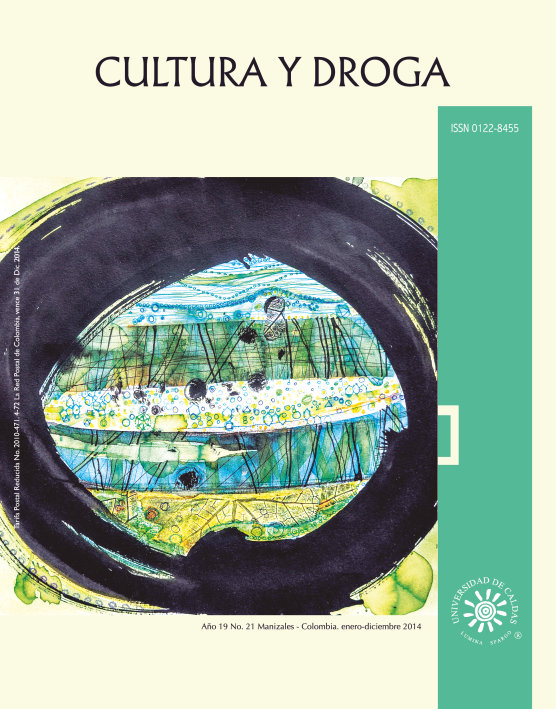Authors
Abstract
Ayahuasca (decoction), a mind-expanding plant, has been widely used in the upper Amazonia and has served as a certain kind of instrument to treat the mind in the context of shamanism. Based on the field work, and the author’s experience with Ayahuasca, some aspects of shamanism of an indigenous people in the Ecuadorian Amazon (Canelos Quichua) are shown in a reflexive manner in this article. Usually, geometric patterns (phosphene) appear at first, and then concrete images appear. However, in some cases, rather than such transformation of perception, the change in the domain of the "senses" seems to be more remarkable. The purpose of this article is to globally understand the variety of such experiences. To do this, and getting out of the framework of shamanism, the various Altered States of Consciousness (ASC) experiences in modern society are described referring to the wisdom of Eastern philosophy. The discussion ends with a suggestion that the immense potentiality and the risk of ASC are in the “loss of meaning”.
References
Caillois, R. (1986). Los juegos y los hombres: la máscara y el vértigo. Ciudad de México, México: Fondo de Cultura Económica.
Castañeda, C. (1971). A Separate Reality. Harmondsworth, England: Penguin.
Furst, P. (1976). Hallucinogens and Culture. New York, USA: Praeger Publishers.
Geertz, C. (2006). La interpretación de las culturas. Barcelona, España: Gedisa.
Gehlen, A. (1970). Ningen-gaku no Tankyuu (Anthropologische Forschung). Tokyo, Japan: Kinokuniya.
Harner, M. (1972). The Jivaro: People of the Sacred Waterfalls. New York, USA: Doubleday, Natural History Press.
Harner, M. (1980). The Way of the Shaman. San Francisco, USA: Harper & Row.
Hirukawa, T. (2002). Higan no Toki. Tokyo, Japan: Shunjusha.
Huxley, A. (2010). Las puertas de la percepción. Cielo e infierno. Ciudad de México, México: Editores Mexicanos Unidos.
Ikemi, Y. (1985). Estados alterados de conciencia. Diversos estados de nervios, psique, fisiología y conciencia. Barcelona, España: Gedisa.
Ishikawa, M. (1967) México ni okeru ‘seinaru kinoko-girei’ no taiken. Minzokugaku Kenkyu. The Japanese Journal of Ethnology, 31 (4), 299-300.
Izutsu, T. (1980). Islam Tetsugaku no Genzou. Tokyo, Japan: Iwanami.
Izutsu, T. (1983). Ishiki to Honshitsu. Tokyo, Japan: Iwanami.
Kenji, M. (s.f.). Aomori Banka. Recuperado de http://why.kenji.ne.jp/haruto/152aomor.html
Ludwig, A. (1972). Altered States of Consciousness. New York, USA: Doubleday.
Maki, Y. (1977). Kiryu no Naru Oto. Tokyo, Japan: Chikuma.
Michaux, H. (1957). L’infini turbulent. Paris, France: Mercure de France.
Miyamoto, T. (1977). Seishin Bunretsubyo no Sekai. Tokyo, Japan: Kinokuniya.
Miyanishi, T. (1985). Maya-jin no Seishin-sekai heno Tabi. Osaka, Japan: Osaka Shoseki.
Nakamaki, H. (1992). Hajime ni ekitai ariki: Brasil ni okeru genkaku shukyo no soseiki. Tokyo, Japan: Heibonsha.
Noll, R. (1983). Shamanism and Schizophrenia: A State Specific Approach to the Schizophrenia Metaphor of Shamanic States. American Ethnologist, 10 (3), 443-459.
Reichel-Dolmatoff, G. (1978). Beyond the Milky Way: Hallucinatory Imagery of the Tukano Indians. Los Angeles, USA: UCLA, Latin American Center Publications.
Sartre, J.-P. (1967). La náusea. Buenos Aires, Argentina: Losada.
Shanon, B. (2003). The Antipodes of the Mind: Charting the Phenomenology of the Ayahuasca Experience. New York, USA: Oxford University Press.
Tanikawa, S. (1993). Tabi 4 Alicante. Korega Watashi no Yasashisa desu. Tokyo, Japan: Shueisha.
Yamamoto, M. (2002). Genkakuzai to chiryou. Psychedelics to Bunka. Tokyo, Japan: Shunjusha.

 PDF (Español)
PDF (Español)
 FLIP
FLIP

















